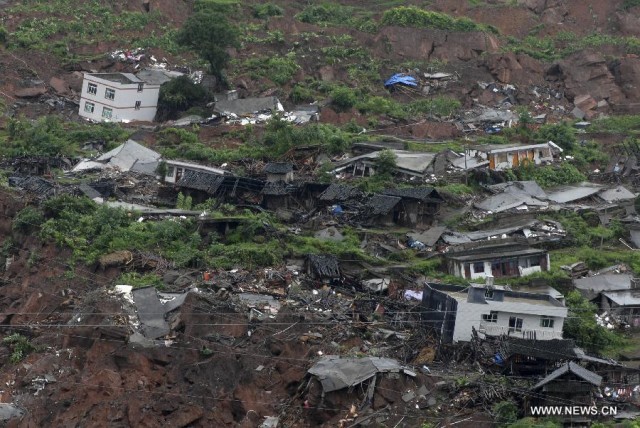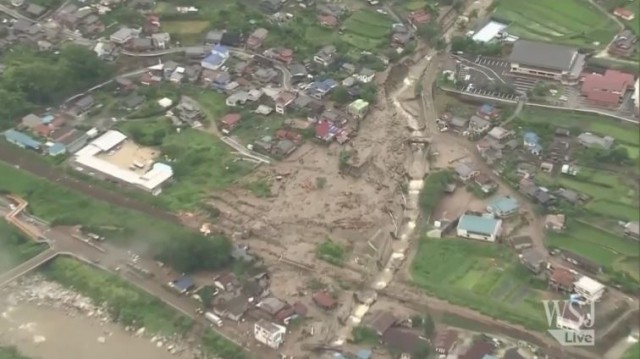26 July 2014
Guizhou and Nagano – the aftermath of recent landslides
Posted by Dave Petley
Guizhou landslide
China Development Gateway has some interesting images of the aftermath of a landslide that occurred on 17th July at Gedi Village, located in Muhuang Township within Yinjiang Tu and Miao Autonomous County, in Guizhou Province, China. The landslide has reportedly damaged 152 buildings and caused the evacuation of 275 people:
.
Note the much more disrupted component of the landslide at the front on the left side. In the main slide, even the apparently intact buildings have been rendered uninhabitable:
.
My interpretation is that this is a deep-seated landslide because the lateral scarps are very well developed and show considerable vertical extent:
.
There can be very little prospect that this landslide could be stabilised at a reasonable cost, and sadly the village is already an almost complete loss. The causes of this landslide are not clear to me, but of course this is the rainy season in China.
Nagano debris flow
Meanwhile, an interesting video has appeared of the aftermath of the debris flow at Nagiso in Nagano Province of Japan, which killed a child on 8th July. The video should be visible below (if the embed works!) – if not you can watch it here.
.
The video starts with the CCTV footage of the front of the debris flow. Probably the most interesting aspect of this is the aerial view of the damaged area from the flow:
.
The area of devastation lies immediately downstream of a bend in the existing channel. Until that point the landslide had remained mostly within its banks, but at that point it left the channel and ran through the town. The terrible impacts on the buildings in this area are clear.






 Dave Petley is the Vice-Chancellor of the University of Hull in the United Kingdom. His blog provides commentary and analysis of landslide events occurring worldwide, including the landslides themselves, latest research, and conferences and meetings.
Dave Petley is the Vice-Chancellor of the University of Hull in the United Kingdom. His blog provides commentary and analysis of landslide events occurring worldwide, including the landslides themselves, latest research, and conferences and meetings.